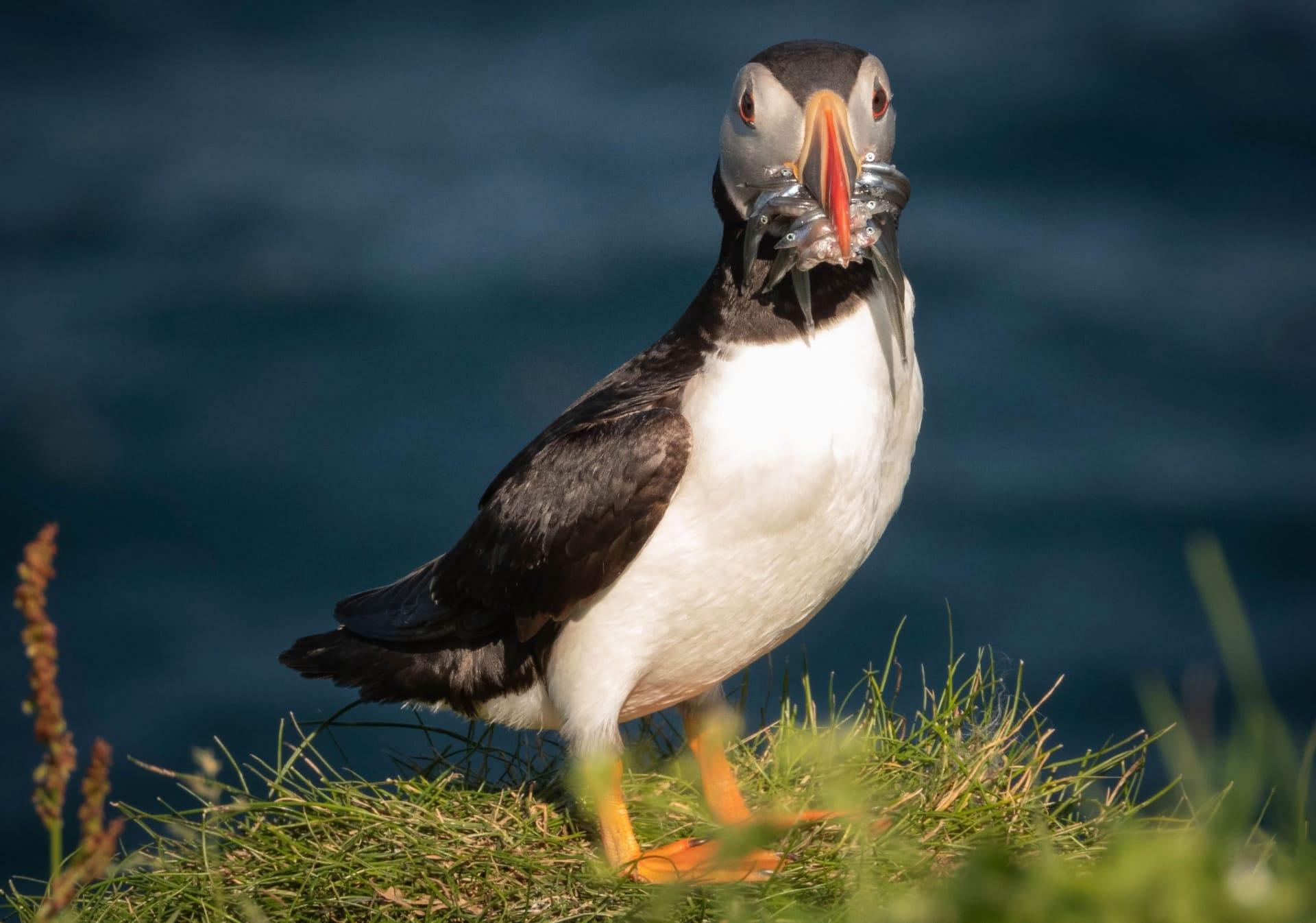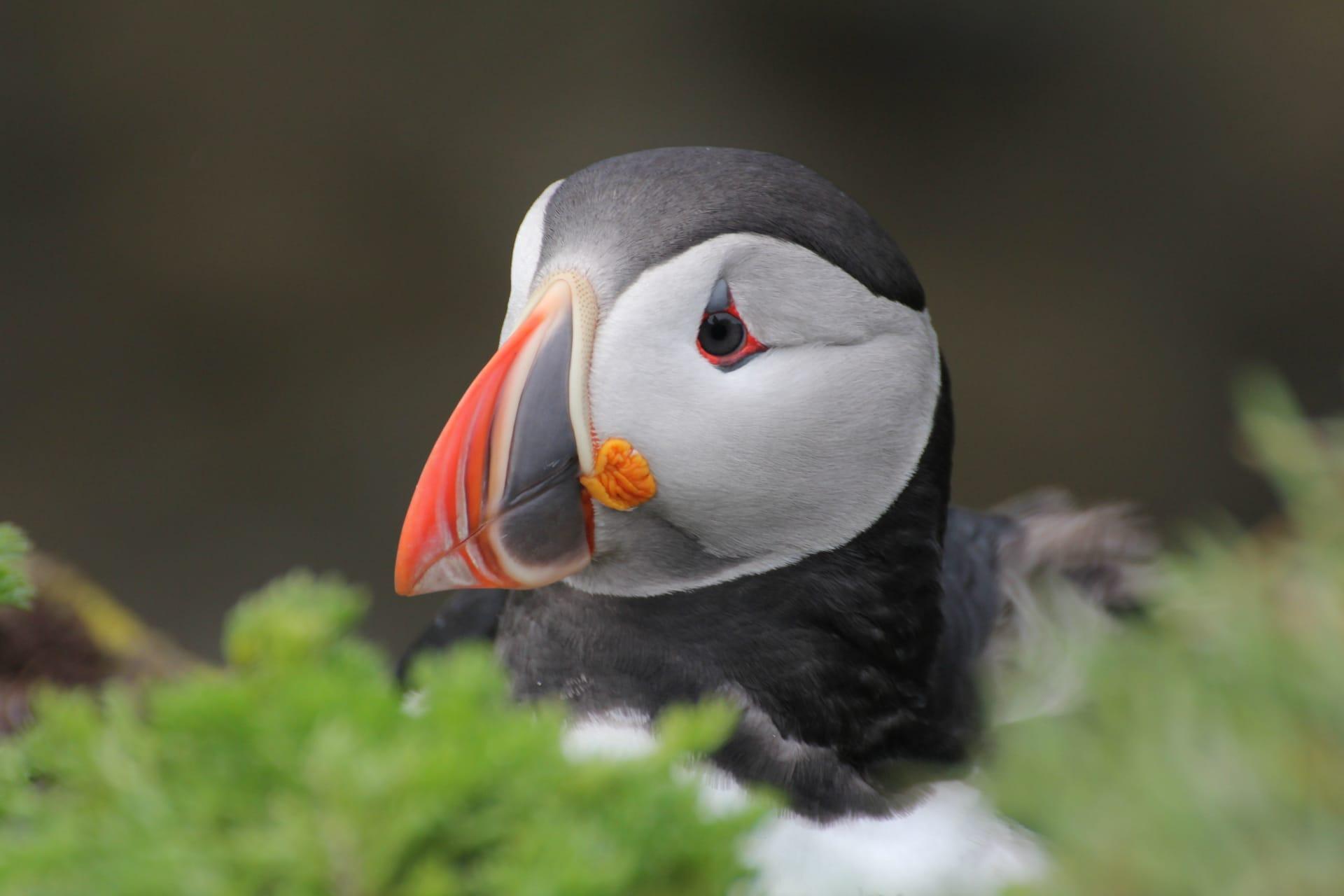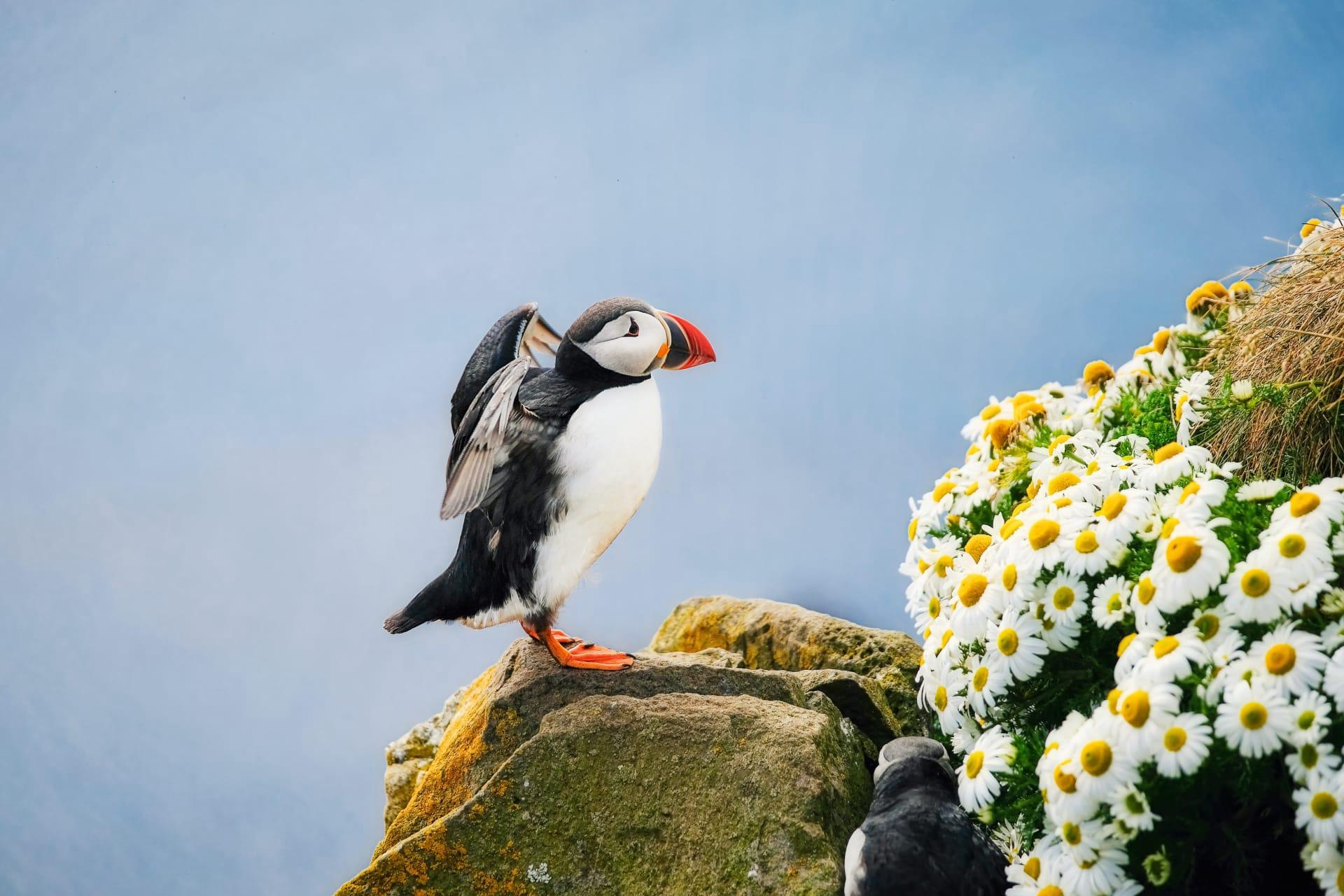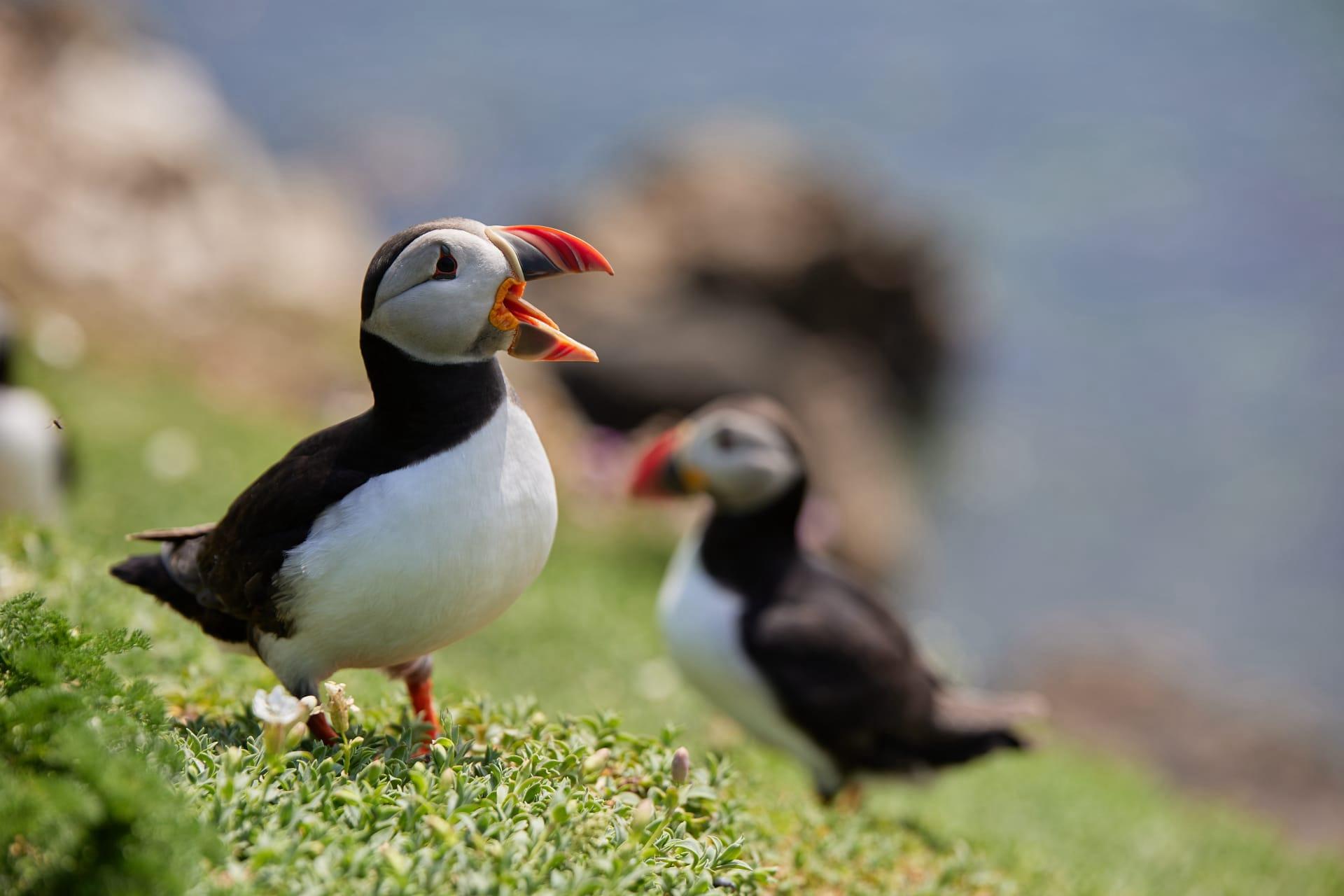Puffin Characteristics
- Home /
- Mini Encyclopedia /
- Animal /
- Puffin Characteristics
1
Puffins, with their distinctive black and white plumage and large, colorful beaks, are small seabirds, typically measuring about 10 inches in length and weighing around 500 grams. These birds are known for their long lifespans, often living up to 20 years or more in the wild. Their compact bodies are perfectly adapted for life at sea, with waterproof feathers and an ability to float on the ocean's surface.
The most remarkable feature of the puffin is its beak, which not only boasts vibrant colors but also plays a crucial role in its survival. During the breeding season, the beak's bright colors become more vivid, serving as an attraction for mates. Functionally, the beak is uniquely adapted for catching fish. Puffins can hold multiple fish at once, typically around ten, but records show a puffin holding 62 fish in its beak simultaneously.

2
Question: Why do puffins have such brightly colored beaks?
Answer: Puffins' beaks are not just visually striking; they play a vital role in their social life. The vibrant colors peak during the breeding season, making them more attractive to potential mates. Interestingly, the beak color fades to a duller shade outside of the breeding season. Additionally, the beak's color and texture change as the puffin ages, which can be a signal of its maturity and health status, further influencing its attractiveness to mates.

3
Puffins are impressive in their agility both in air and water. In the air, they can reach speeds of up to 55 miles per hour, flapping their wings up to 400 times per minute. This rapid wing movement makes their flight efficient but also quite noisy. On land, they are a bit more awkward due to their small wing size and chunky body, often appearing to waddle.
When it comes to feeding, puffins are adept hunters. They dive underwater, using their wings to 'fly' beneath the surface and their webbed feet to steer. Puffins typically dive to depths of around 60 feet but can go deeper if necessary. Their diet mainly consists of small fish, which they catch by diving and holding in their beaks. They prefer small schooling fish like herring, sand eels, and capelin.

4
Puffins are primarily found in the North Atlantic Ocean, from the coasts of Canada and the United States to Iceland, Norway, and the British Isles. They favor cold water and are commonly seen on rocky coastal cliffs where they breed and nest in burrows.
Reproduction is a significant part of the puffin's life. They are monogamous, typically forming long-term pair bonds. Breeding season sees them return to the same nesting sites yearly. Puffins lay a single egg, which both parents incubate. Once hatched, puffin chicks, known as 'pufflings,' are fed by both parents until they are ready to fledge and venture out to sea, which occurs about six weeks after hatching.

5
Book: "The World of the Puffin" delves into the life of puffins in a global context. Authored by Trevor Boyer, an expert in marine ornithology, this book, published in the United Kingdom in 1991, offers a comprehensive look at puffin species across various regions. It includes detailed descriptions of their habitats, behaviors, and the challenges they face.
Book: "Project Puffin: The Improbable Quest to Bring a Beloved Seabird Back to Egg Rock" is an inspiring story of conservation. Written by Stephen Kress and Derrick Jackson, published in the United States in 2015, this book narrates the journey of bringing puffins back to Maine's coast. It blends ornithological information with a heartwarming tale of environmental restoration and the dedication of scientists and volunteers in this endeavor.